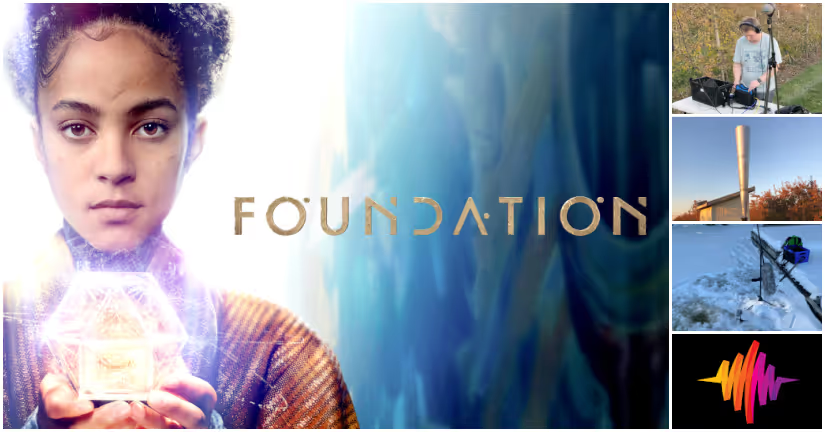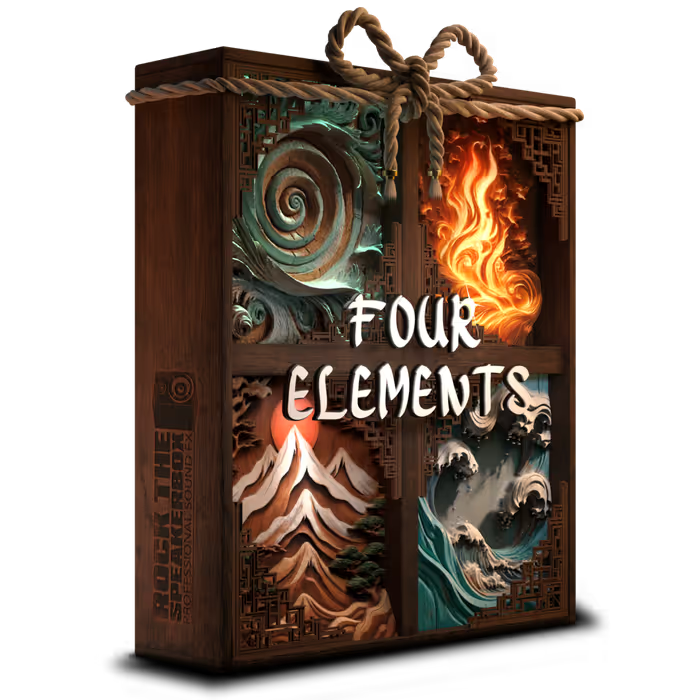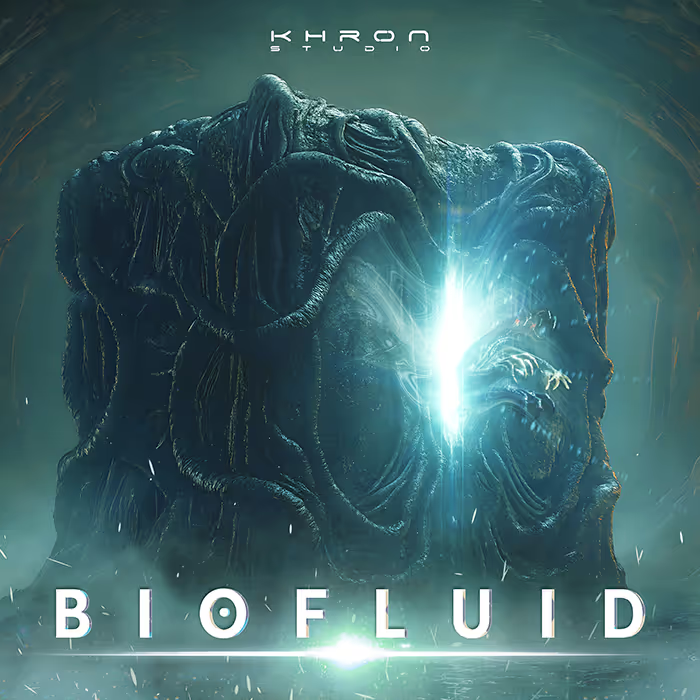Sci-fi fans have gotten some quality entertainment to feast on recently – like director Denis Villeneuve’s Dune film, Neon Giant’s The Ascent game, and Apple TV+ series Foundation .
Foundation brings to life the award-winning book series of sci-fi master Isaac Asimov. Its tale traverses space and time, bringing together disparate planets and people under the rule of the Galactic Empire. Taking on an entire galaxy of sounds is a daunting task, but 2x-Emmy nominated supervising sound editor/sound designer Tyler Whitham and his sound team at Sound Dogs Toronto are more than qualified to handle it. Whitham himself has worked on sci-fi series like Netflix’s Altered Carbon, Amazon’s The Expanse, and USA’s Colony, plus films like Resident Evil: Afterlife and Resident Evil: The Final Chapter. That experience helped him to hone the sound of Foundation‘s weaponry, creatures, varied planetary environments and civilizations, catastrophic attacks, space travel, and more. All of which he talks about here in this exclusive interview with A Sound Effect!
Foundation — Official Trailer | Apple TV+
What were showrunners Josh Friedman and David S. Goyer’s initial ideas for how this sci-fi galaxy should sound? Did they have references to other films/shows in this genre? Did they have ideas on what to avoid sonically?
Tyler Whitham (TW): Lots of ideas and concepts came up and were put on the table early on during our conversations and eventual spotting sessions. Most of what we set out to challenge ourselves with was the ability to sonically differentiate all the different planets both with atmospheres, certain technologies, and the language and dialect.
Early on we’d get emails with YouTube links or short thoughts/ideas to bank away and think about implementing when the time came. Some came to fruition; others did not. But at least we got thinking about it.
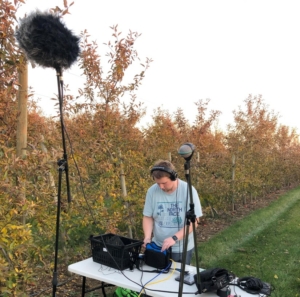
I don’t recall many “don’t you dare make this sound like xxx in this sci-fi series” but we did talk about ways to make things different than other series.
The conversation came up too about the inevitable “sound-in-space vs. silence.” We settled on it being somewhere in between. Halfway between Stars Wars and Interstellar. You want it to be accurate but we needed to keep things exciting for those action sequences. Sometimes we’re just in the POV of their spacesuits, hearing them over their comms, and other times we’re hearing full-on explosions. For example, when the Star Bridge falls at the end of Ep. 1 we treated it like a journey. Those initial explosions when we’re way up high were more muted, and as the tether falls closer to the planet, we start to hear them more full-frequency as if the atmosphere and air would be increasing.
On the flip side, we tried to keep our deep space shots as more ambient sound shifting. David referenced The Tree Of Life by Terrence Malick as the style when we’re in space. I think it was effective too, especially scenes like when we were on our spacewalk or anytime in space really.
Another cool example was in Ep. 7 when they’re walking through the hallways of the Invictus with their mag boots on and no atmosphere. We hear them through helmet comms and when they turn the gravity back on, everything that was floating drops and we consciously increase the background air and atmosphere with a little air whistle. You can feel the space around you increase, which is an odd feeling unless you’re listening for it but important to the story of course.
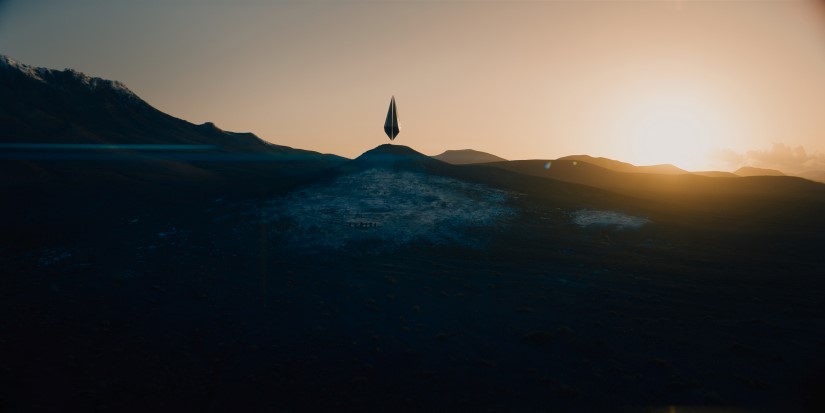
In Ep. 1, the kids approach the “Vault.” What went into the sound of the force field that it projects that’s “designed to keep people away?” How did you make this sound have a physical effect on listeners as well?
TW: We took a few runs at this. We originally did a temp mix of Ep. 1 early on so we built some things that we got to test out. Some of the vault elements created by one of our fantastic effects editors, Paul Germann, stayed and some we had to re-invent. But for the most part, the shape that Paul cut early on was carried through to the final.
In Atmos, we spun things around the room and dialed in some of the stuttering effects to make it feel disorienting for the viewer.
The idea was that this force is somewhat weaponized to everyone except Salvor. When she approaches, we had to make it a more inviting force and less aggressive but in the same palette and tones. We used lots of synths and metal layers but also we built these more empathetic sounding layers with bird calls and pitched whales.
During the approach from the kids, really it was chalked up to good mixing by Kirk Lynds (effects) and Steve Foster (dialogue/music). In Atmos, we spun things around the room and dialed in some of the stuttering effects to make it feel disorienting for the viewer. David G. wanted to hear weird high-pitched sounds as well as low-end whomps. In Atmos, that makes the room shake.
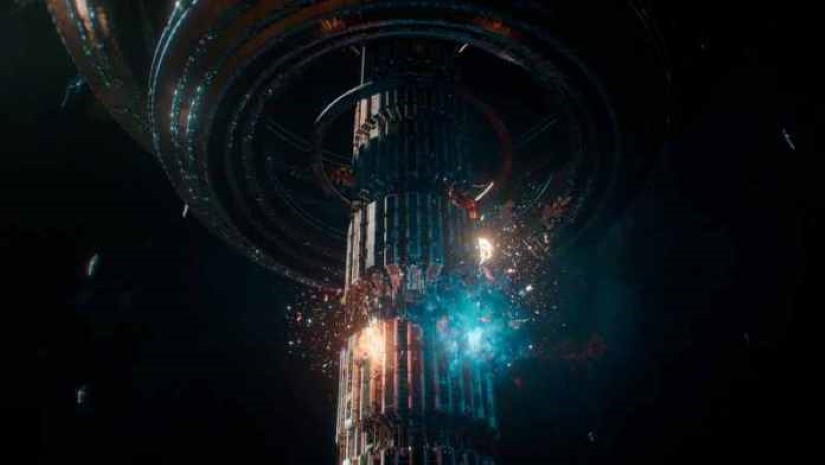
Can you talk about your approach to the attack on the massive Star Bridge that comes crashing down on Trantor? How did you use sound to sell the magnitude of this structure? How did you use sound to shrink this event down to a personal (and relatable) level for the audience?
TW: As I mentioned earlier, the idea of a journey was the idea of selling its magnitude. We started with the muted low-end whomping explosions but as we get closer, things get louder and have more detail. The contrast from exterior space to the interior of one of the space elevators with people screaming made things feel excessively more chaotic.
The contrast from exterior space to the interior of one of the space elevators with people screaming made things feel excessively more chaotic.
We also worked with smaller moments – like when the glass implodes on the women in the space elevator car – to remove music and crowd moments before the implode to make it feel much more intense, terrifying, and even helpless-feeling for the viewer.
All these little things allowed us to build up to one large idea and go from nowhere to somewhere with the sound. These aren’t necessarily new sound mechanisms but for us, they were effective to convey the size and weight of the tether.
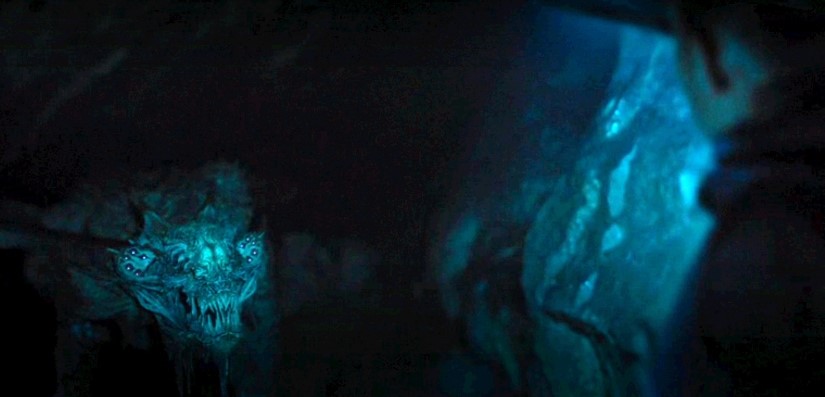
For Ep. 2 during the sim drilling sequence, can you talk about your sound work in this scene? There was so much happening sound-wise with the tech, the drilling, and then the creature. Plus, there’s really great spatialization happening. Can you break down this sequence in terms of sound, your challenges, and opportunities here?
TW: That’s a great scene. It’s also one we did some early passes on for the picture department. I don’t know if we built it in any specific way but the visual cues really made it out to be fantastic and ultimately sound the way it did.
“Maybel”…was created with these great recordings of a wheezing sick horse I had as a base and sweetened it with some lower grunty exhales.
We started with the chisel breaking away the rocks and then when she hits that toxic gas leak, we now have this constant hiss which is kind of annoying and your brain inherently feels like you need to fix whatever is leaking (funny how sound does that). Then Gaal hears the bishop’s claw (a megafauna creature native to the Outer Reach) and we peel back almost everything except her footsteps and breathing until we reveal the face of this bishop’s claw.
The vocals of that were mainly made from a bengal tiger and some odd bird and cranes clicking.
In Ep. 3, we see “Maybel,” our injured bishop’s claw. She was created with these great recordings of a wheezing sick horse I had as a base and sweetened it with some lower grunty exhales.
In terms of spatialization, again, hats off to our mix team. Creating the moments of anticipation and scare with the mix is what they’re pros at!
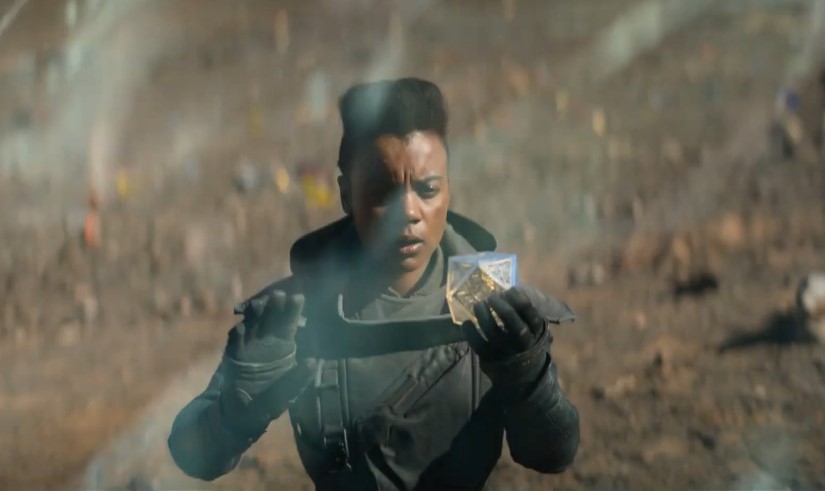
Ep. 3 is comparatively quiet, but still full of cool sounds! Can you talk about how you created the sound for: the 3-D planetary map, the statue busts that rise up from the pedestals as Brother Dusk walks by them, the light machine that (now) Brother Darkness walks into and turns to ash, the sound of the painting being erased by Brother Dawn, the reprise of the ‘Vault’ sound and Salvor’s interaction with it, and the sound of Harri’s cube/equation device with the psychohistory?
TW: The 3-D map, in general, was built in line with many of our other Sandograms UI, as well as the statutes of the previous Dusk empires. (Note: Holograms in Foundation take the form of ‘Sandograms’.) Early on, I created a little library of elements to be used in the series for these. Most of the elements were particle-like things – recordings of sand, glass, cardboard, paper, and even fireworks. Then I processed them through granular synths (I think for the sando’s I used UVI Falcon and The Mangle) and then manipulated each to fit on-screen, often running them through dopplers (Tonsturm Traveller) for the ins and outs or swipes.
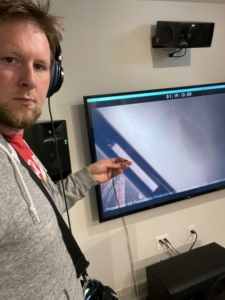
The painting being erased was kind of cool. The motion of the erasing was feeling very unnatural as I cut it, so I have these EMF mics that I plugged quickly into my recorder, looped that scene in Pro Tools, walked up to my TV, and started to wave my hand across the TV in the same motion it was being performed onscreen to capture those EMF sounds properly. Once I had that as the base, I could layer in more things to give it more sizzle.
The Prime Radiant from Harri was, I think, one of the earliest creations for the picture room. It uses tons of layers. There are lots of processed insects, like crickets, as the base. I used a ton of whooshes that had been pitched and modulated (I love Polyverse Manipulator in small doses!), and just like the sandograms, weird layers that underwent some granular synth for the accents. The spinning detail layer in the series was a processed roulette wheel which ended up sounding very cool.
The Prime Radiant, much like the Vault, had to be scalable because we find out it’s connection to the Vault near the end of the series, so they all needed to play a role in telling that early on.
Also, it was important to highlight its connection to Gaal, and Salvor as well, and therefore it couldn’t sound the same each time so I came up with little sounds specific to their character.
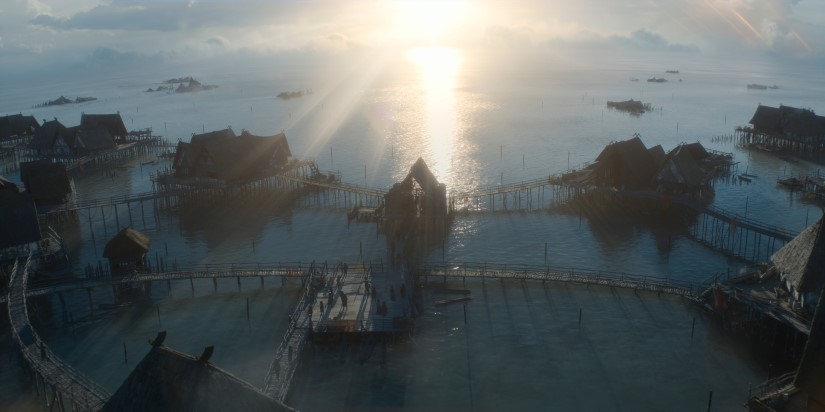
Ep. 5 starts on Synnax. What went into creating the sound of this place? What makes this place unique sound-wise?
TW: I think the visuals of Synnax are really what stole the show. It looked incredible and so making sounds to accompany it was the easy part. Those were mainly the sounds put in by our team member Gerald Trepy. There are lots of water lapping, exotic sea birds, wood creaks, and so much other detail he added. Finding the right balance of all that made it feel unique and special.
Joe Bracciale (Co-Supervisor) also did a great job with the loop group and shooting proper accents for Synnax and making it feel authentic.
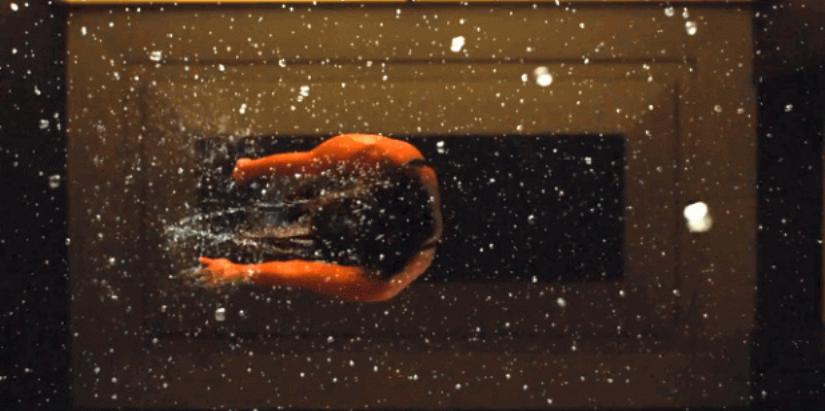
There’s a cool slo-mo scene of Gaal in the shower on the ship; she’s knocked off her feet and flips thru the water. What went into creating that sound?
TW: Bass drops. Lots of Bass drops. So this is where the ship flips and changes course so we lose gravity momentarily. We pulled out any atmosphere BG’s like air, etc., and just focused on design and music. I added washed-out sounds of water and the scalpel and just some ear candy to help the flip feel extra cool.
[tweet_box]Creating a Galaxy of Sound for Apple TV+ series ‘Foundation’ with Sound Designer Tyler Whitham[/tweet_box]
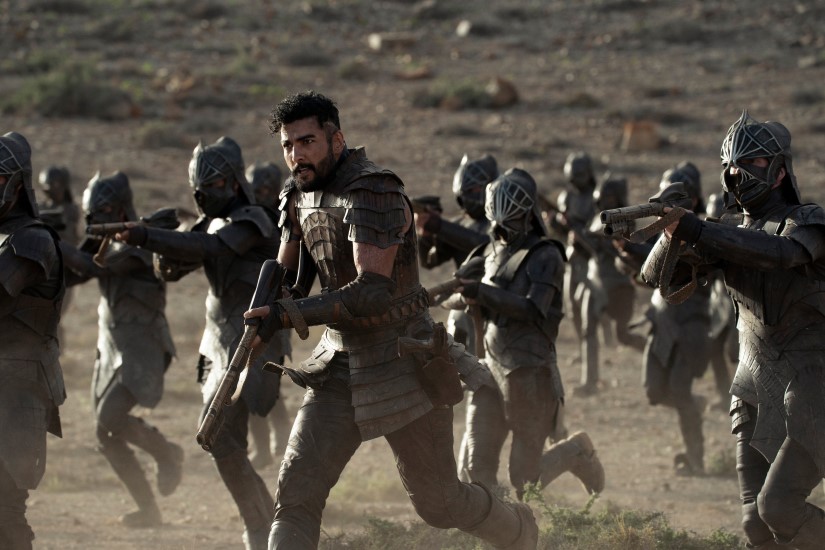
What went into the sound of the Anacreaons’ weapons? How does their sound compare to the Empire weapons?
TW: The conversation we had early on with David was how we would differentiate the different planets’ weaponry. The Anacreon guns never really shoot projectiles like a bullet but rather they shot more of a charged plasma ball.
The Guns from Terminus, which were from Empire technology, were more tactical and shot actual projectiles in some form of a bullet. They still needed to sound sci-fi but not too “pew-pew.”
We also had Hugo’s Ion Pistol, which was a whole other beast.
Another one of our fantastic sound editors, Dave Rose, and I traded off ideas for the weapons and together we created a little library, lots of which we created in Krotos Weaponiser. We placed midi notes on each weapon shot and if there were some elements that needed to be swapped out, I could go back, make the change, and then reprint that section. We printed them out as stems too, so luckily we didn’t have much to go back on. It was typically just rebalancing the elements of each gun stem.
This was the first time I’ve used Weaponiser like this for a project, but I pitched it to Dave so we could create the flexibility on the stage as well between editors so that’s the road we went down.
It still ended up being a lot of work (sorry Dave!) but I think it turned out well. Also, we now have those patches built for subsequent episodes or seasons.
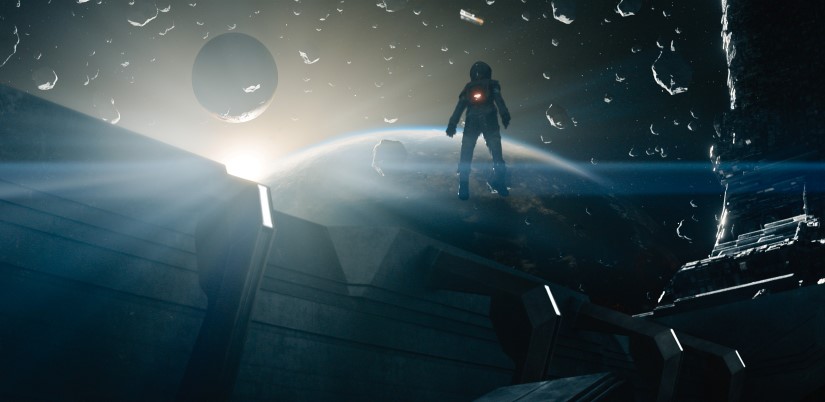
In Ep. 7, for the jump and landing on Invictus, how did you help to heighten this scene through sound? (I love the ‘boots on the ship’s hull’ sound. It reminded me of The Expanse mag boot sound!) Also, the shootout with the railguns, how were you able to take advantage of the surround space to make this feel more intense?
…foley records their feet first and then sends them to me. Then I convert them to midi notes and run them through Radium in Soundminer.
TW: Those mag boots are a tough thing to wrangle! I’m glad you like them in The Expanse because I had a hand in creating those too! I took a slightly different approach to these though. We did our usual process where foley records their feet first and then sends them to me. Then I convert them to midi notes and run them through Radium in Soundminer. In Radium, I created a little patch of some metal resonance as well as some magnetisms. Mixed with the foley, it gives a nice balance. However, we tried to establish them and then we only hear them judiciously throughout the scene. Otherwise, it gets annoying. We’d sweeten the close-ups too and then pull back on the regular walking.
The shootout on the ship hull was cool because we had a railgun up high at each end and the characters were taking cover in the middle so it allowed us to plant them geographically with sound. It was also just plain fun to get the chance to use our full surround and Atmos spectrum to fly bullets/lasers/impacts all around the room to create this sense of chaos.

Also in Ep. 7, can you talk about your sound challenges/opportunities on creating the Gaal memory flashback sequence, in which she talks to sim Harri about what happened?
TW: I think the biggest challenge was creating the debris fields for Ep. 7 and Ep. 8 too. Again, I’ll tip my hat to Kirk for mixing this in an elegant way. As a sound designer, sometimes I forget we need to hear them talking! And this was important dialogue too!
As I built it, I had to create a number of levels of debris ranging from small sand-like ticks hitting the hull to huge boulders bouncing off the ship. I built impacts and bed tracks all in Radium as well, which were mainly layered impacts with some compression/ EQ /Bass enhancements and pitch.
Creating ebbs and flows of debris was the name of the game.
Then I went to the task of cutting it all in so it built an arc across the scenes. Creating ebbs and flows of debris was the name of the game. The opportunity we had with that was to increase the intensity in tandem with their conversation and story. As they start to argue, it was raining debris harder and harder until Gaal’s epiphanic moment where we peak.
We also got to do some cool glitchy things with Harri’s dialogue. Joe was able to get me the clean dialogue and ADR for Harri. I loaded it into UVI Falcon and played with the granular speed and pitch to make him stutter and glitch. I also supplied a couple of extra layers which Steve Foster then took, treated, and could play down the hallway for extra effect.
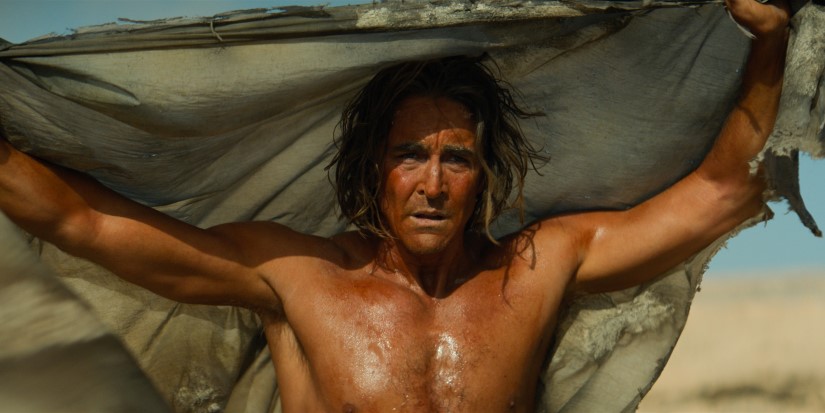
In Ep. 8, Brother Day walks the Spiral. Sound-wise, what was your biggest challenge here?
TW: Not to get too windy all the time! We had some great wind in there but because we spend a lot of time in this location, I think we all got a bit of wind fatigue so lots of it was pulled back to make way for dialogue.
Our foley team at Foley One (Steve Baine and Pete Persaud) did a great job at making everything feel dry.
We also really wanted to give the feeling of heat. We wanted to push it sonically so the viewer kept feeling more and more uncomfortable for Day and to keep them thinking he may give up at any moment. Our foley team at Foley One (Steve Baine and Pete Persaud) did a great job at making everything feel dry. There’s this great shot where Day steps on a rock and you could just hear this sand slide under his barefoot and I remember feeling discomfort just hearing it.
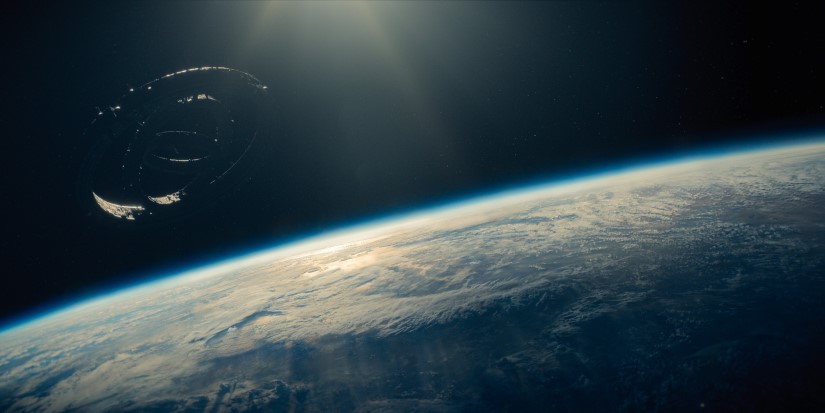
In Ep. 8, Salvor is on the Invictus and it jumps. What were your challenges for creating the sound in this scene?
TW: Lots of the ship jumping were elements we hear prior in the series, as early as Ep. 1 with Gaal.
The biggest thing was creating the different layers of the gyro spinning at different speeds until we sonic boom out. I came up with some odd elements in Xfre Records’ Serum that I printed out and then ran through tremolo and automated the rate with picture as it spins.
The biggest thing was creating the different layers of the gyro spinning at different speeds until we sonic boom out.
Once I printed it out, I used Cargo Cult’s Envy to steal the envelope and add different layers of lows and highs. I was also making sure I stayed clear of music so we didn’t clash since lots of it was very tonal.
There’s a really cool descending sound as we reach the sort of event horizon of it and that ended up being a simple fire whoosh that was modulated in Native Instruments’ Absynth to give it this kind of flanging feel. That resulted in being our signature sound before we jump.
A big thanks to Tyler Whitham for giving us a behind-the-scenes look at the sound design of Foundation and to Jennifer Walden for the interview!

